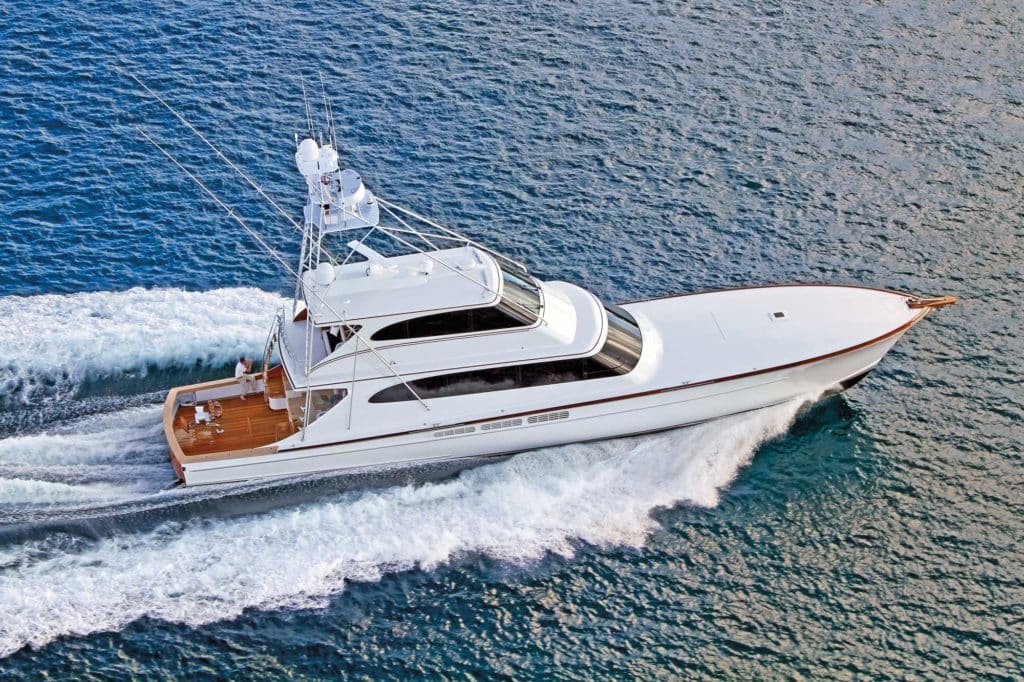
Throw out any preconceived notions you may have about sport-fishing yachts—even large ones. III Amigos—a 94-footer from the consortium of boatbuilder Michael Rybovich, designer Patrick Knowles and an experienced owner—is far more mega-yacht than most fishing machines.
III Amigos was born in a peculiar fashion. Its owner, who spends 50 to 60 days a year fishing, first approached Rybovich but, before signing, asked Knowles to do a dizzying collection of realistic renderings to show the final result. Knowles had a solid knowledge base from working with the owner on previous yachts as well as the owner’s five homes and his business jet, so he had a good idea about where to start.
The Rybovich team was led by Rybovich, with his son Dusty as naval architect. Seasoning the mix was the owner’s captain, Jody Whitworth, who has fished the seven seas and skippered the owner’s previous Merritt 86. Whitworth had folders of ideas to incorporate. “I designed her in my head for three years before we put pen to paper,” he says with a grin.
The yacht was handcrafted of cold-molded mahogany (three layers in the sides and four layers on the bottom) with teak decking. Dusty Rybovich’s design has a distinctive long foredeck and unbroken sheerline, but it differs slightly from traditional Rybovich designs with slightly more deadrise (7 degrees rather than 6 degrees). Prop pockets bring the half-load draft for the 165,000-pound yacht to 5 feet, making it Bahamas-friendly.
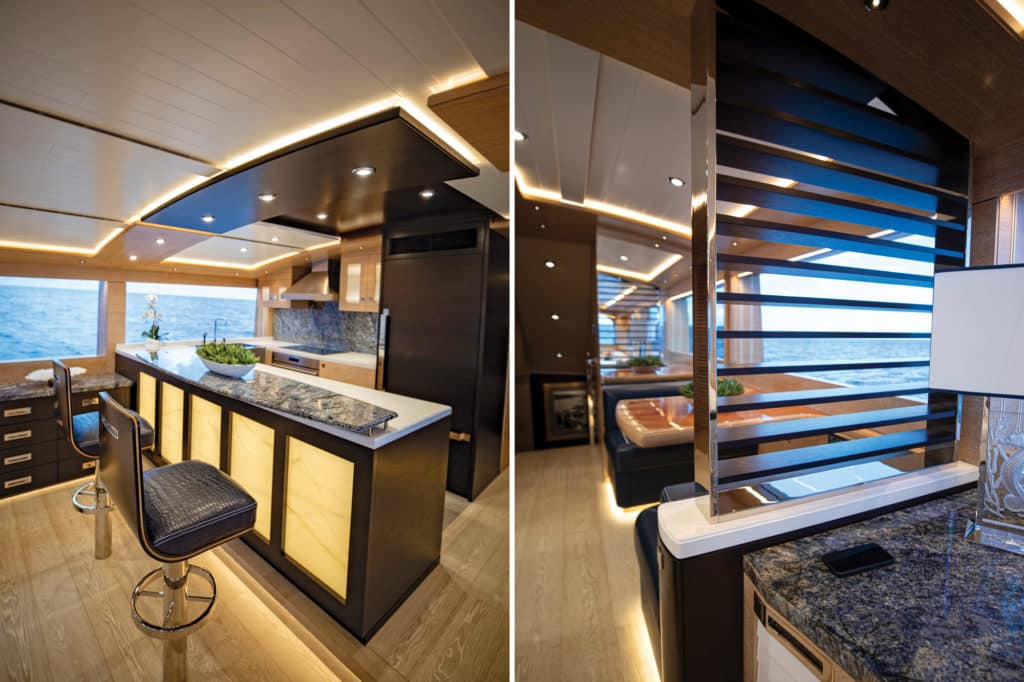
The owner, who also owns a 196-foot Feadship, required the mega-yacht fit-and-finish, along with a “oneness with water,” so every living area has ocean views. German interior outfitter Metrica produced the interior joinery, while Rybovich handled the exterior (including ¾-inch-thick teak decking) and the enclosed-bridge interior.
Knowles designed the salon as a calm world of athwartships-planked pale oak with dark-wenge margins. The bulkheads are washed and limed oak with a tongue-and-groove overhead. The result is bright, with hidden lighting in a laser-cut, low-profile soffit that is gentle at night.
The salon, with Edelman leather couches, segues into the forward galley with a dinette opposite. That redwood-burl dinette is separated by slatted wenge louvers to create a “there but not there” effect, and the settees are finished to match the owner’s Ferrari in quilted leather, with “glove boxes” tucked into the sides for personal items and USB connections.
The galley was specified by the owner, a chef, with azul bahia marble countertops and backlit onyx highlights under the bar. The stools are covered in slipper-soft Florida alligator dyed blue.
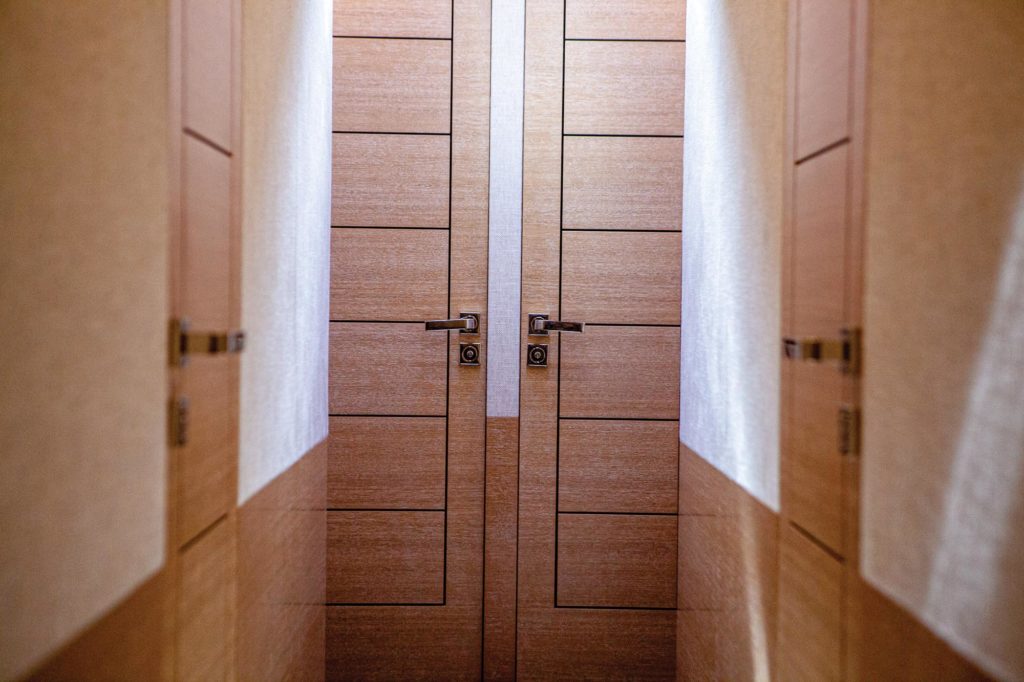
Accommodations are outfitted to mega-yacht standards too. Subtle but telling touches are the solid doors to the staterooms; each mimics the owner’s Feadship with ¾-inch thickness. The doors close flush (each has hidden hinges), and the sound is of a Rolls-Royce door closing.
The full-beam owner’s stateroom is amidships with a lounge and 65-inch TV to create a private getaway. Quiet is guaranteed by double layers of insulation above and on the sides, with a triple layer aft against the engine-room bulkhead.
Three guest staterooms are all en suite, with the heads clad in striato Olympic marble and wenge wood. Two crew cabins, accommodating four people total, are forward—also en suite. All the rooms are bright, with Dusty Rybovich keeping the hull lines pure by disguising the windows to look like engine-room vents.
Because the crewmembers have no dedicated mess area, the flybridge was arranged to provide amenities for their off-duty hours as well as everything needed for long-distance cruises to fishing grounds. To minimize intrusion on guests in the salon, there is no inside stairwell to the enclosed bridge, which is served by a ladder from the cockpit/mezzanine.
The bridge has a full galley hidden in cabinetry, as well as a dinette, 55-inch pop-up TV, day head, and helm equipped with three independent and redundant Furuno systems. MTU joystick control with dynamic positioning is linked to the Side-Power hydraulic bow thruster for precise maneuvering and endgame fishing control. Maintaining tradition, a Rybovich “pod” with a separate throttle and shift on each side is centered in the dash. As with the salon, the bridge has extensive angling-gear stowage (86 rods, dozens of reels and countless spools of line).
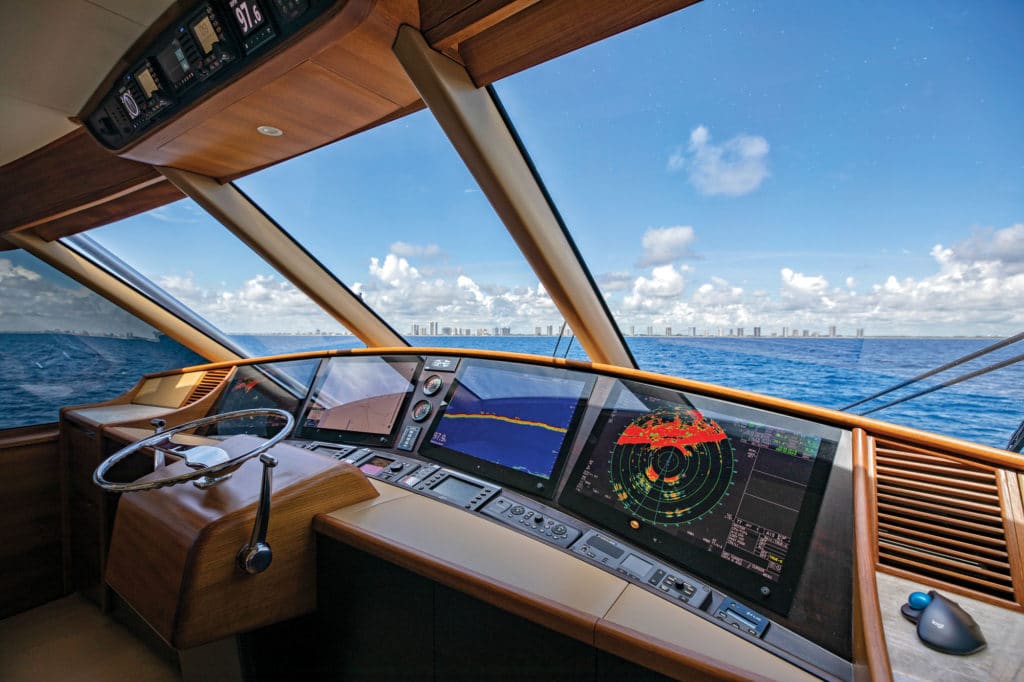
While the interior is notable, the cockpit is the star attraction for big-game anglers, with its teak sole and wide covering boards. A BlueWater fighting chair is the centerpiece, and the sole and seating conceal 225-quart fish boxes and Eskimo ice machines capable of producing 1,600 pounds per day. Two on-deck livewells and two integrated livewells are fed by a Wicked Wells six-pump system to handle bait needs, and a freezer is under a mezzanine seat.
Three steps up from the cockpit is a shaded mezzanine for spectators, with a chaise longue to port, an L-shaped settee to starboard around a table, and a private head compartment. Guests are cooled by chilled air via hidden vents in the headrests of the seats, as well as from overhead slots. The bridge deck also has a guest area with lounge seating, as well as a cleverly hidden pop-up control station for the skipper.
Above it all is the Bausch tower, which is double-anodized aluminum for a satin look. From atop, the skipper has full controls and duplicates of the electronics at the lower helm.
The engine room is easily serviced, with walk-around real estate to access the twin 2,600 hp MTU V-16 2000 M96L diesels. These powerplants reportedly push III Amigos to a top speed of 41-plus knots.
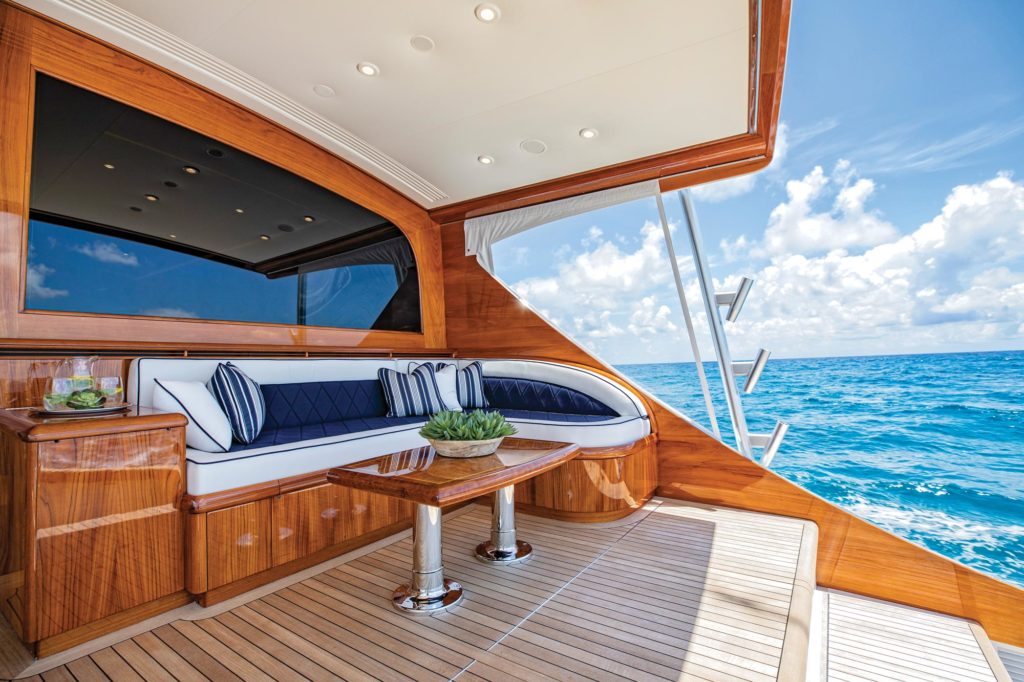
The twin 40 kW Kohler gensets feed Asea frequency converters with a Ward’s seamless transfer-switch panel. The engine room and systems area also has three 6-ton Dometic air chillers, a trio of Headhunter Aqua-Box freshwater pumps, and an Alfa Laval fuel-polishing system for handling foreign fuel. A commercial-grade Seakeeper 30HD gyrostabilizer should take the roll out of rough days.
With a trademark profile, speed and bluewater comfort—and a superyacht-level finish—III Amigos not only carries on the iconic Rybovich name but also raises the bar for future custom sport-fishing yachts.
Behind the Design
Patrick Knowles is an award-winning designer based in Fort Lauderdale, Florida. He and his team have worked on a wide range of yachts such as III Amigos, as well as private homes and private jets for worldwide clients. One client has reportedly returned 19 times.
The Family Business
Rybovich, the Florida-based boatbuilder, has been turning out legendary sport-fishing yachts for 100 years. III Amigos is the latest iteration by Michael Rybovich, grandson of founder Pop Rybovich, with Michael’s son Dusty Rybovich as the naval architect.
What is Cold-Molding?
First used in the late 1800s, cold-molded plywood consists of thin veneers of wood saturated in resins and cross-laminated to create a rigid and lightweight hull. The process was celebrated during World War II for the Mosquito fighter plane, known to pilots as the “Timber Terror” or “Wooden Wonder” because it returned them home in spite of heavy combat damage.
Take the next step: michaelrybovichandsons.com








